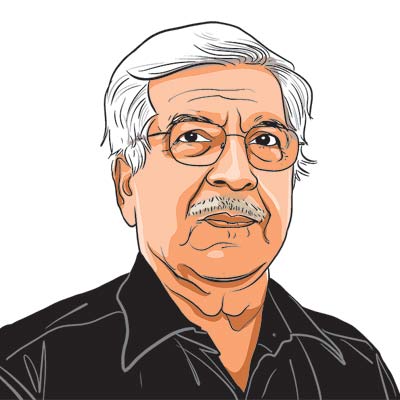Opinion The Global Steeplechase
A calculation was made that with a nine per cent growth rate in the meltdown years,China would overtake Japan and become the second largest economy of the world next to the US.
An event occurred last week relatively unnoticed in India. A calculation was made that with a nine per cent growth rate in the meltdown years,China would overtake Japan and become the second largest economy of the world next to the US this year itself. A well known commentator said there was no stopping China.
When the Canadians and some others calculated a decade or so ago that China was the third largest economy in terms of purchasing power parity next to Japan and the US,it was also pointed out that India was the fourth largest. This was the argument that China and India were in the top eight economies of the world,but some members of the G 8 were not,hence the world order needed restructuring.
At that time,the global think tanks and Bretton Woods institutions did not think much of Indian growth. In fact,Indian scholars like Isher Ahluwalia and abroad,TN Srinavasan and Jagdish Bhagwati,talked of the stagnation hypothesis,and the arguments of people like me and Arvind Virmani that India was growing fast were not kosher.
It was the CIA,and later,Dani Rodrik,K K Subrahmanian and Arvind Panagariya,who changed all that. By 2002,in a 2020 model adapted from one we had originally developed for Johannesburg,released by the UN,I showed in an invited lecture at the Indian Econometric Society that if savings rates kept up,factor productivity growth went up from three per cent to five per cent,and India kept up expanding its share of world trade,it would grow at eight per cent annually,and would become the third largest economy of the world.
We need to discuss that path. For as we said then,history treats laggards and has-beens badly.
In fact,during the ninth,tenth and eleventh plans,we have been growing at seven percent annually and some experts like my friend Shankar Acharya make the point that the underlying trends are at six to seven per cent. We would call this the ‘Business As Usual’ scenario. The dreams which were seen from the Mera Bharat Mahaan days need to be sustained. They are of getting our place in the sun.
The argument,or in some cases a subconscious feeling,that growth is at the expense of poverty-removal and equity considerations,is false. If for no other reason,because unequal growth does not sustain itself. Widespread growth or that without universal human and skill formation,is an oxymoron. In that sense,we have to have pro-poor or widespread,rather than inclusive growth. This is a question of a shared vision and channelizing energies to pursue it.
The vision is there in the memory banks of a country which envisioned and fought the most important battle for Independence in the modern world. But achieving it is not possible if it is not recognized as the overriding goal,and if those who would erode it are not held accountable. The easy path,the path of the Luddite,the path of those who would give a solution on somebody else’s account when it is not there,that slipping from the standards of ethical governance,that urge to use the short-cut to cut down your opponent,that momentary loss of confidence in our ability to do it — all will have to be given up and opposed. If you decide that 2010 will be the year of resurgence,it will be so.


